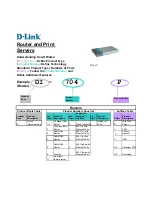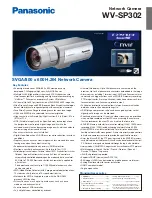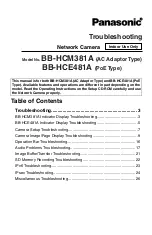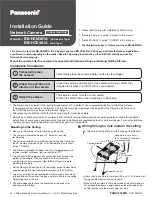
Glossary
68
BAYONET NUT COUPLE (BNC) CONNECTOR
—A 10BASE2 thin coax
connector with push-on BNC locking lug that quickly locks into place with a half
twist.
BIT RATE (BR)
—The rate of data throughput on the medium in bits per second.
Ethernet specifies 10 million bits per second.
BIT TIME
—The duration of one bit symbol (1/BR). Ethernet specifies a bit time
of 100 ns.
CARRIER SENSE
—In a LAN, an ongoing activity of a data station to detect
whether another station is transmitting.
CARRIER SENSE MULTIPLE ACCESS with COLLISION DETECT
(CSMA/CD)
—This is the access method employed by IEEE 802.3 LAN
transceivers, by which multiple stations compete for use of the transmission
medium (coax cable) for data packet transmission. It provides for a level of error
detection should that transmission be corrupted or impeded by contention for the
transmission medium.
COAX SEGMENT
—A segment of Ethernet cable that contains MAUs.
COAXIAL CABLE
—A two-conductor (center conductor, shield system),
concentric, constant impedance transmission line used as the trunk medium in the
baseband system.
COAXIAL CABLE SEGMENT
—A length of coaxial cable sections and coaxial
connectors, terminated at each end in its characteristic impedance.
COLLISION
—An unwanted condition that results from concurrent
transmissions on the physical medium.
COLLISION PRESENCE
—A signal provided by the PLS to the PMA sublayer
(within the physical layer) to indicate that multiple stations are contending for
access to the transmission medium.
COMPATIBILITY INTERFACE
—The MDI coaxial cable interface and the
AUI branch cable interface, the two points at which hardware compatibility is
defined to allow connection of independently designed and manufactured
components to the baseband transmission system.
CROSSOVER
—Wiring used when connecting a 10BASE-T MAU to another
10BASE-T MAU or a 10BASE-T hub to another 10BASE-T hub. For example, one
10BASE-T MAU has the TD pair on the same pins as another 10BASE-T MAU. If
pins were wired straight, there would be two transmitters on one pair and no
receiver. As a solution, the crossover cable crosses the TD pair with the RD pair,
to connect the TD pins on one end to the RD pins at the other end.
D-SUB CONNECTOR
—The AUI cable uses 15-pin D-sub connectors. “D”
refers to the shape of the connector shell. Also called miniature D, DB15, or DIX
connectors.
DATA COMMUNICATION EQUIPMENT (DCE)
—In RS232 specification a
module, such as a modem, for connecting a DTE to other equipment. A repeater
connected to a terminal or workstation for OMEGA management use is wired as a
DCE.
DATA TERMINAL EQUIPMENT (DTE)
—In RS232 specification a module
typically at the end of a segment. The DTE could be an Ethernet workstation,
repeater or bridge.













































